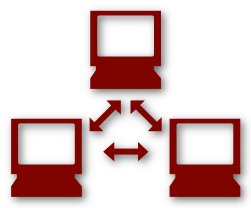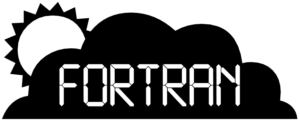
OpenCoarrays 2.0.0 has been released. According to the release notes, this release adds support for:
- Fortran 2018 teams (note that this requires the use of GFortran 8.x, currently under development)
- Fortran 2018
QUIET specifier in STOP and ERROR STOP statements
- Fortran 2008 allocatable & pointer components of derived-type coarrays
Since Fortran 2008 (with the inclusion of coarrays in the standard), Fortran has been a PGAS programming language. Fortran 2018 adds additional enhancements for coarrays (including the teams feature, and support for detection of failed images). OpenCoarrays is an open source (permissive BSD license) library that enables coarray support in the GFortran compiler.
See also

You can now try OpenCoarrays and Gfortran in the cloud, courtesy of Zaak Beekman and the Sourcery Institute. Just navigate to http://bit.ly/TryCoarrays and then click "Launch". This awesome project is enabled by various other awesome tools like Binder, Jupyter, and GitHub. Truly, we are living in the future.
Coarrays are the parallel processing component built into the Fortran language (standardized in Fortran 2008). It uses the Partitioned Global Address Space (PGAS) and Single-Program-Multiple-Data (SPMD) programming models. OpenCoarrays is an open source library to enable coarray usage in Gfortran.
See also
Hey, there's an article on the internet that mentions Coarray Fortran (introduced in the Fortran 2008 standard), and how it is the right tool for a particular massive computational job. It doesn't mention punchcards, the 1950s, or express any surprise that people are still using Fortran in modern times. Progress?
Excerpt:
Applications such as ECMWF's IFS model use OpenMP (a standard for shared memory parallelization) for computations on the nodes and MPI for communications across the nodes. Generally, this arrangement works well for many applications, but for high-resolution weather modeling using the spectral transform method, it can bog down the application, wasting precious runtime—it simply does not easily allow for any overlap of computation and communication. The use of coarrays (also called PGAS, for Partitioned Global Address Space) in Fortran, however, allows a simple syntax for data to be communicated between tasks at the same time computations are being performed.
See also

